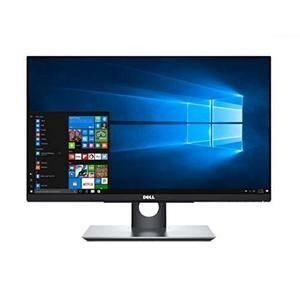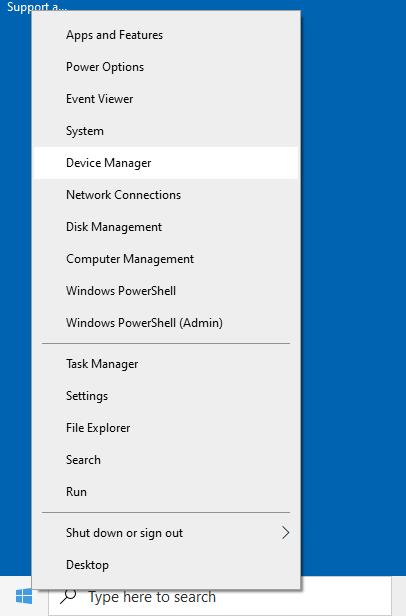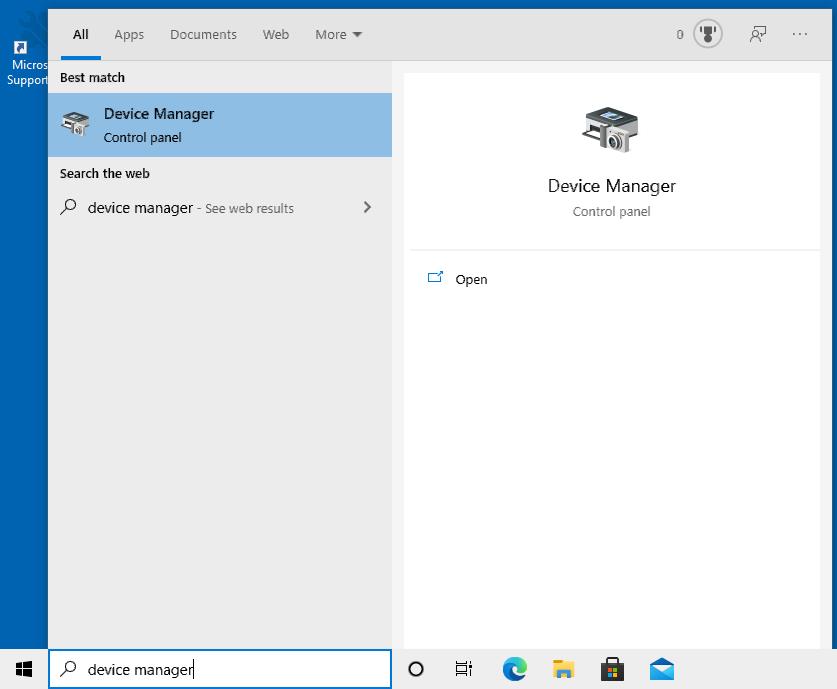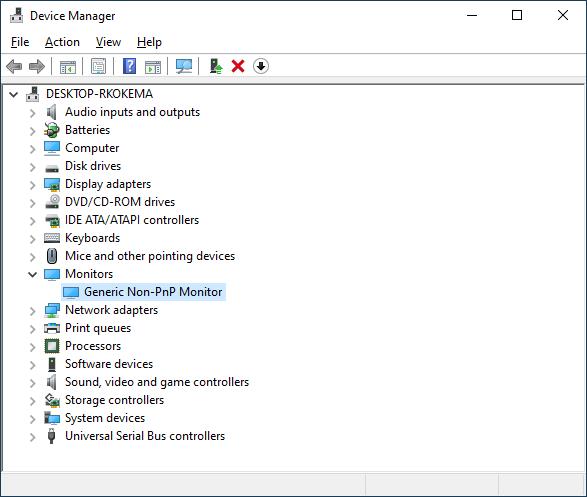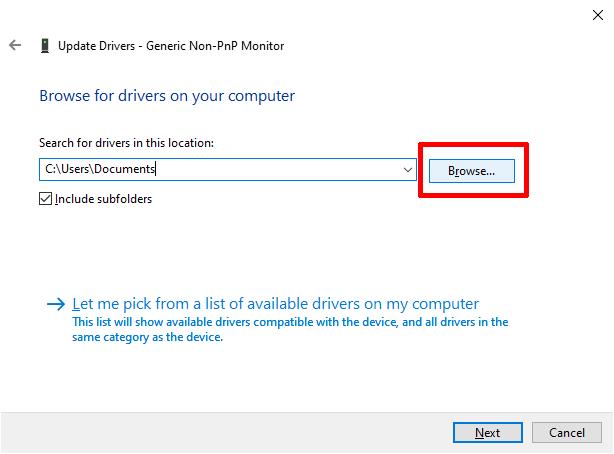Monitor drivers tell your Windows PC what display monitor you are using and what the capabilities of the monitor are. The monitor driver ensures that your display can be optimized for color usage, refresh rates, and screen resolutions.
In Windows 10 a lot of hardware is recognized and supported directly, so in many cases monitor drivers are installed automatically.
But if your monitor is not recognized or detected properly, your screen resolution and other display settings will be limited. In that case it might be required to manually install monitor drivers in Windows 10. That will then allow you to use the maximum capabilities of the monitor.
Other scenarios where you may to need to manually install monitor drivers is when using an older monitor, or connecting an external monitor to a laptop.
Monitor Driver Installation Steps for Windows 10
Step 1– To start with the manual installation of the monitor driver, you need to open the Device Manager in Windows.
Right-click the Start button, and in the Start menu, select Device Manager.
Alternatively, simply type “device manager” in the search box, and then click the Device Manager in the search results.
Step 2 – In the Device Manager window, open the Monitors group, and select the monitor for which you manually want to install the driver.
Step 3 –Right-click the monitor item, and in the the popup menu, select Update driver.
Step 4 – In the Update Drivers window, select the option Browse my computer for drivers
Step 5 – Next, click the Browse button and navigate to the location of the monitor driver files.
Monitor driver files typically exist of at least 3 files, a file with file extension .INF, a file with file extension .CAT, and a file with file extension .ICM.
The INF file is used by Windows for the driver installation. It contains driver installation information and a list of devices supported by the driver. The CAT file is a catalog file that contains, as Microsoft calls it, thumbprints for all files in the driver collection. The ICM file contains the color profile for the monitor that allows Windows to match colors with the display characteristics of the monitor to show realistic colors.
Step 6 – Click the OK button to confirm the location of the monitor driver files.
Step 7 – Click the Next button to confirm the monitor driver file location.
Windows 10 will now install the monitor drivers for your monitor and show a message that it has successfully updated your drivers.
Step 8 – Click the Close button to finish.
The Device Manager should now list the monitor(s) with the correct brand/model indication.
Note: the system in the screenshot was a double monitor setup, hence the double entry of the monitor in the Device Manager.
Problems Related to Monitor Drivers in Windows 10
The most common problem you will face if Windows 10 does not recognize the monitor is that the screen resolution is limited to a low resolution (640×480, 800×600, or 1024×768). Especially with modern (4K) screens, resolutions can be a lot higher.
For non-LCD screens, the refresh rates can also be limited, which might result in a flickering screen.
Dual (multi) display setups can also have restrictions as result of the monitors not being recognized.
I already mentioned the color profile for monitors. An ICM file is used to specify the International Color Consortium compatibility for a monitor. To make sure the intended colors are properly displayed by the monitor they are calibrated and the values are defined in the color profile. This prevents the problem with the monitor displaying incorrect colors.
One thing to keep in mind though, is that it is not only the monitor driver that affects display issues. The graphics card and the driver for the graphic card are just as important. Memory limitations on the graphics card can limit possible screen resolutions, and so can DisplayPort-to-HDMI dongles. So make sure you check and update the graphics card drivers as well.
Where Do I Find Monitor Drivers for Windows 10?
If you have your original monitor installation package, you could find a CD-ROM (or DVD) with it that contains the original drivers. Even though they may not be the latest drivers for your monitor, it is a good place to start if you still have them. But most manufacturers of display monitors will have a support section on their website where you can download monitor driver files for their models.
Unlike many other device drivers, monitor drivers are less limited to Windows versions, so even if there is no direct support for Windows 10, you can often use a monitor driver for an older version of Windows in Windows 10. In general, there is also no distinction between 32-bit and 64-bit versions for monitor drivers.
If you cannot manually find a monitor driver for you monitor, try downloading DriverFinder and let it find a monitor driver for you automatically.
Additional Monitor Software
Apart from getting the right driver for your monitor device, installing the software from the original manufacturer can also help to install additonal software. For the example used in this article, we used a BenQ display. That comes with something called Display Pilot.
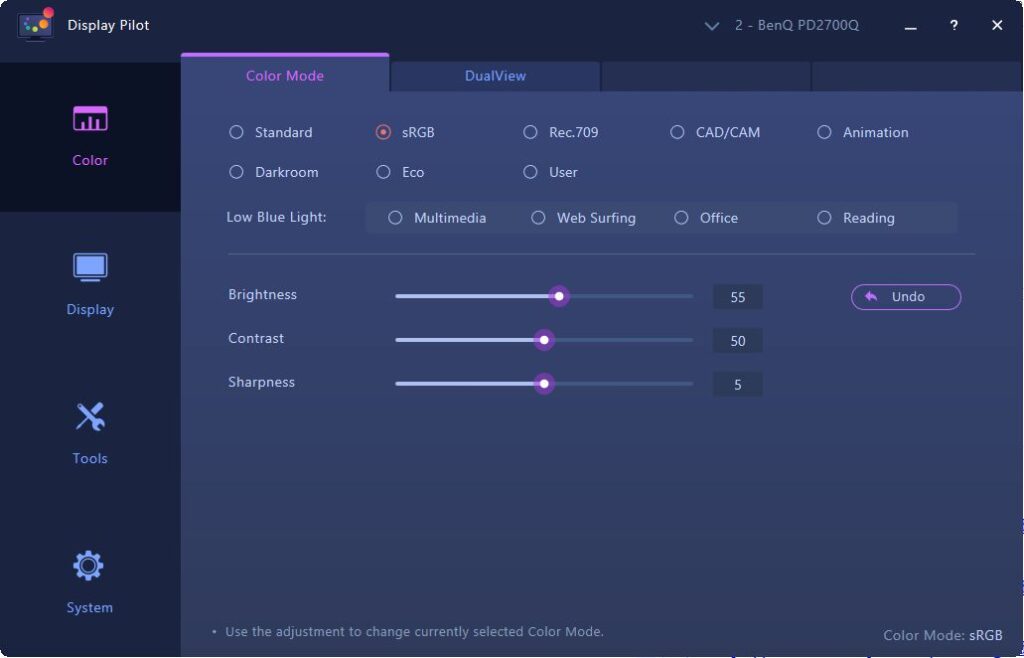
This type of software can help control settings for your monitor(s). Instead of using physical controls, you can change the contrast and brightness from the program. ViewSonic has the vDisplay Manager, which is something similar.
Some other features, like different color profiles, virtual desktops, and similar options can have an overlap with standard features in Windows 10 itself. So the added value of this type of software needs to be assessed, and you do not install software that is not adding value. Typically these programs are run at startup (or logon), so they can increase the Windows start time.

